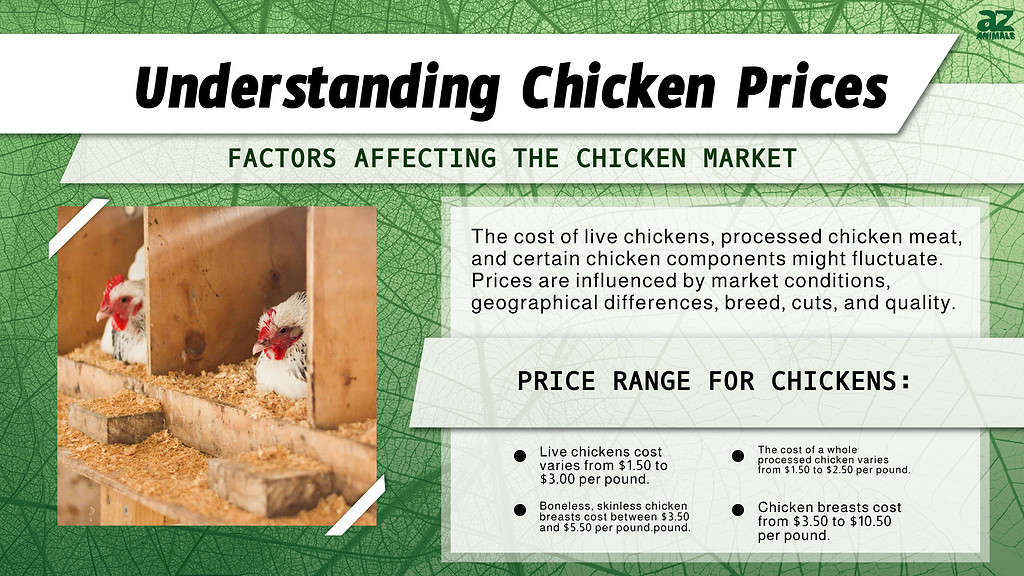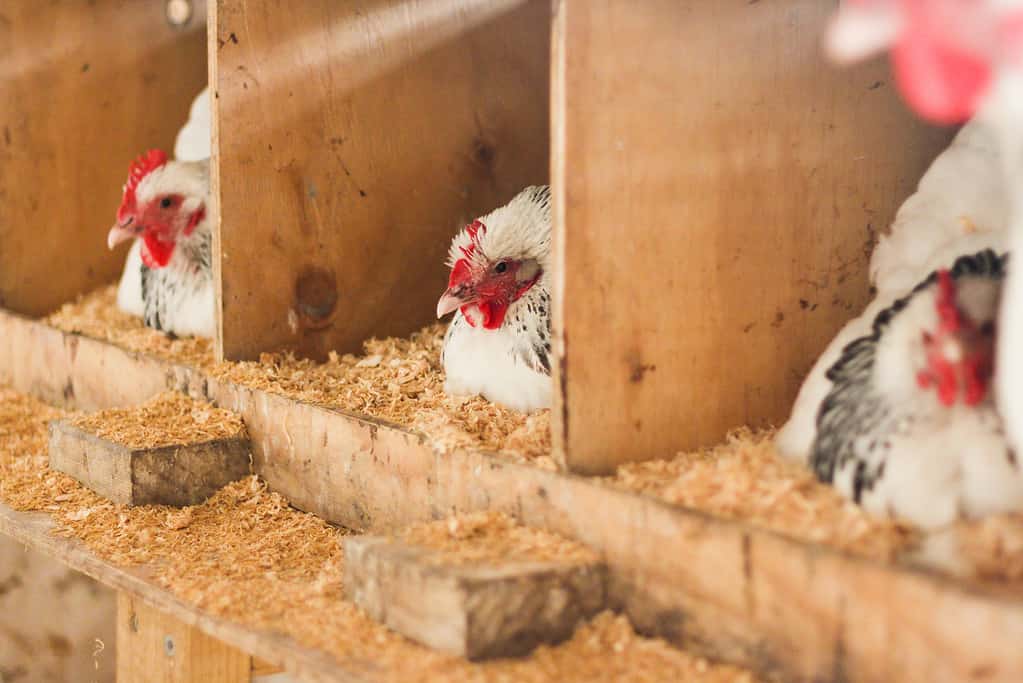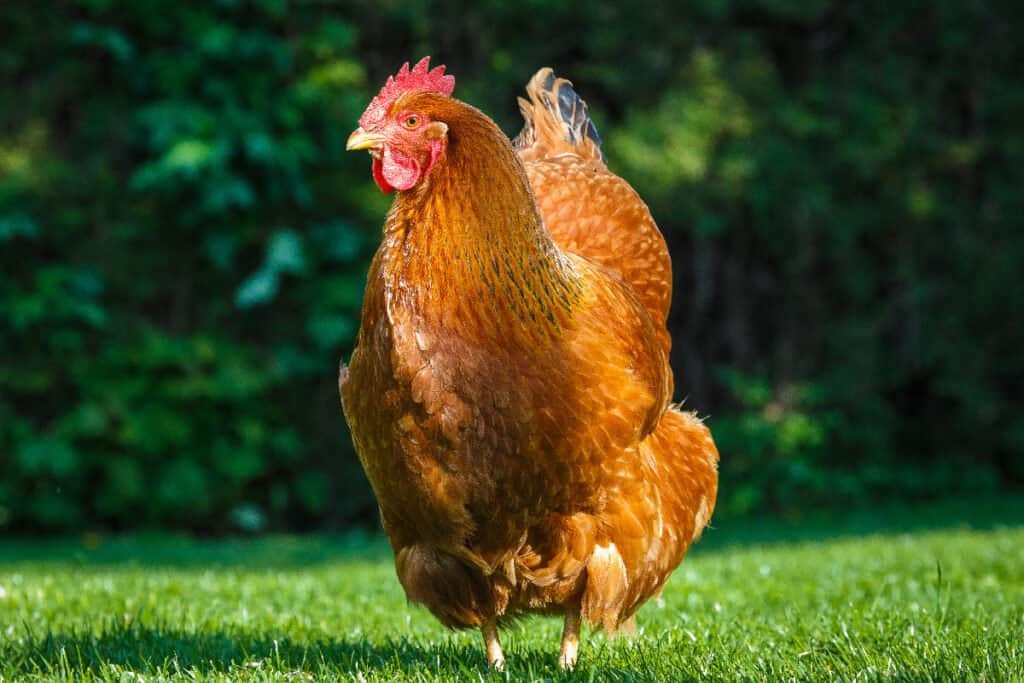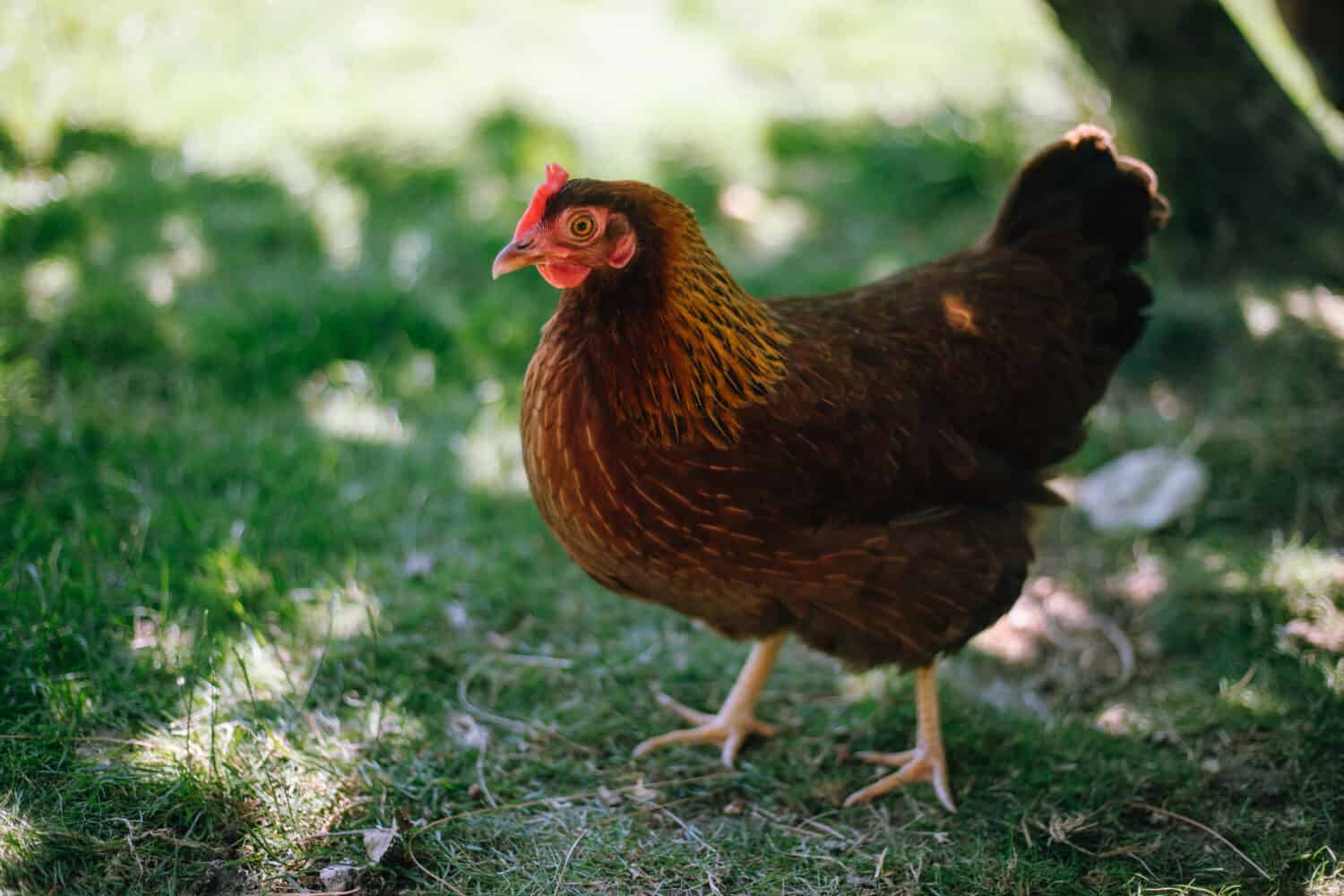Welcome to the ultimate guide on understanding chicken prices and the myriad factors that influence them. In a world where poultry holds a prominent place on our plates, it is crucial to grasp the intricate dynamics behind the ever-fluctuating cost of this feathered favorite. From farmers and retailers to consumers and policymakers, comprehending the forces at play in the chicken market is essential for all.
In this guide, we will explore the factors that contribute to the rise and fall of chicken prices, unveiling the complex interplay of supply and demand, economic factors, and global trends.
While many might perceive chickens as mere poultry, they are undeniably intertwined with the economic tapestry of nations and play a pivotal role in feeding billions. Understanding the forces that shape chicken prices enables us to make informed decisions, whether we are farmers seeking profitable ventures, retailers balancing profit margins, or consumers making choices within their budgets. Let’s get started by first looking at current market trends.

Current Market Trends
Demand and Consumer Preferences
The chicken market is witnessing several notable trends driven by changing consumer preferences. Health-conscious consumers are increasingly opting for chicken as a lean protein source, leading to a surge in demand. Furthermore, there is a growing preference for organic and free-range chicken, as consumers seek products that are raised without antibiotics or hormones and have access to outdoor spaces. This shift in consumer preferences has resulted in an expansion of organic and free-range chicken production, albeit at a higher cost.
Supply and Market Conditions
The chicken market is influenced by various factors affecting supply and market conditions. Fluctuating input costs, such as feed prices and energy expenses, can impact production costs and subsequently influence consumer prices. Additionally, labor costs, transportation costs, and market competition all contribute to pricing dynamics. Disease outbreaks and seasonal fluctuations also affect the supply of chicken, leading to price fluctuations in the market.
External Influences
External influences, including regulations and global trade dynamics, play a significant role in the chicken market. Regulatory policies related to animal welfare, food safety, and environmental sustainability can impact production practices and costs. For instance, stricter regulations on antibiotic use may result in changes in production practices and costs. Moreover, trade agreements and tariffs have implications for the import and export of chicken products, affecting supply and prices on a global scale. Changes in global trade dynamics can influence market conditions and pricing.
Price Fluctuations and Future Outlook
The chicken market experiences price fluctuations due to the interplay of various factors. Fluctuations in input costs, supply and demand dynamics, consumer preferences, and external influences can all contribute to price volatility. Stakeholders in the chicken industry need to monitor these trends and developments to make informed decisions. As the demand for organic and free-range chicken continues to rise, there may be a need for increased production and supply chain adjustments to meet consumer preferences. Just as well, market conditions, regulatory changes, and global trade dynamics will continue to shape the chicken market and its pricing in the future.

Many economic factors affect the cost of raising chickens (pictured) and purchasing poultry meat.
©iStock.com/nedjelly
Price Range for Chickens
Live Chickens
Live chickens can differ in price based on several variables, including breed, age, and weight. The typical cost of live chickens may vary from $1.50 to $3.00 per pound. It’s crucial to remember that geographical differences and market circumstances might affect pricing. For instance, prices may be on the upper end of the spectrum in regions with higher manufacturing costs or a restricted supply.
Processed Chicken Meat
Whole chickens, boneless, skinless chicken breasts, drumsticks, and wings are examples of goods that fall under the category of processed chicken flesh. Cuts, processing techniques, and quality are some of the variables that affect the price range for processed chicken meat. The typical cost of a whole chicken may vary from $1.50 to $2.50 per pound. As a common and useful cut, boneless, skinless chicken breasts can cost anywhere between $3.50 and $5.50 per pound. Drumsticks and wings from chicken can cost anywhere between $1.50 and $3.00 per pound and are frequently utilized in particular dishes or as snacks.
Specific Chicken Parts
Price ranges for particular chicken parts might change depending on customer demand, supply, and market circumstances. Chicken breasts can cost anywhere from $3.50 to $10.50 per pound. Another common cut is chicken thighs, which may cost anywhere from $2.50 to $4.50 per pound.
The price per pound for chicken legs, which include the drumstick and thigh, can range from $1.50 to $3.00. These pricing ranges give you an idea of the market as a whole, but it’s crucial to bear in mind that prices might change depending on location, seasonality, and any other outside forces that may alter supply and demand.
The cost of live chickens, processed chicken meat, and certain chicken components might all fluctuate within the aforementioned ranges. The prices are influenced by market conditions, geographical differences, breed, cuts, and quality.
Factors Affecting Chicken Prices
Breed
The breed of chicken can affect the price of chicken products. Some breeds are specifically bred for their meat quality, such as the Cornish Cross breed, which is commonly used in commercial chicken production. These breeds have a faster growth rate and higher meat yield, making them more cost-effective for producers. As a result, chicken products from these breeds tend to be more affordable.
On the other hand, specialty breeds or heritage breeds, which may have specific characteristics or be raised for specific culinary purposes, can command higher prices due to their uniqueness and limited availability.
Quality
The quality of chicken refers to its freshness, texture, flavor, and overall eating experience. Factors like the chicken’s diet, living conditions, and processing methods can influence its quality. Higher quality chicken, such as those raised on a specialized diet or in free-range environments, can be more expensive due to the additional care and resources involved in their production.
Weight
The weight of chicken plays a role in pricing. Generally, larger or heavier chickens cost more than smaller ones because they yield more meat. Larger chickens require more feed, time, and resources to reach their desired weight, contributing to the higher price. Conversely, smaller chickens may be more affordable but offer less meat per bird.

Heavier-bodies hens (pictured) often fetch a heftier price than smaller-bodied chickens.
©Jesper Frehr/Shutterstock.com
Processing Method
Different processing methods, such as whole chicken versus specific cuts, can affect the price. Whole chickens are usually more affordable than individual cuts because they require less labor and processing. However, convenience cuts like boneless, skinless chicken breasts or pre-cut parts often come at a premium due to the additional processing involved.
Organic or Free-Range Designation
Usually, organic or free-range chicken products often come with a higher price tag. Organic chickens are raised without antibiotics, hormones, or genetically modified feed. The organic certification and additional requirements for organic production contribute to the increased costs. Similarly, free-range chickens, where birds have access to outdoor spaces, may require more space, longer production cycles, and higher feed costs, leading to higher prices.
Certifications
Chicken products with specific certifications, such as organic, halal, or kosher, can also impact prices. These certifications often involve additional production requirements, inspections, and processes to meet specific religious or quality standards. The costs associated with obtaining and maintaining these certifications are reflected in the product prices.
Assessing the Value of Chicken Products
When evaluating the value of chicken products, consider factors like breed, quality, weight, processing method, organic or free-range designation, and certifications. Assess your preferences, budget, and specific needs. If affordability is a priority, conventional breeds, and cuts may be suitable.
However, if you value factors like organic production, specific culinary requirements, or religious considerations, you may opt for higher-priced specialty breeds or certified products. It’s essential to balance price with your personal preferences and priorities to make an informed decision when purchasing chicken products.
Regional Variations
Due to a variety of factors that affect supply and demand dynamics, chicken prices might change geographically. These variances may cause chicken costs in some places to be higher or lower than the national average.
Cost of Production
Chicken prices are typically higher in locations with greater production expenses, such as those with high feed, labor, or energy expenditures. Consumers pay more for chicken products as a result of these increasing manufacturing expenses.
Transportation
Regional pricing discrepancies are significantly influenced by transportation expenses. Due to the greater expenses of shipping and logistics, areas further away from chicken production centers or with less developed transportation infrastructure may suffer higher pricing. Chicken prices are frequently higher in remote or rural places where transportation is difficult.
Local Market Dynamics
Chicken prices can be impacted by regional market factors including customer preferences and competition. Prices may be higher than normal in regions with little competition or in those where there is a significant demand from consumers for chicken. On the other hand, prices may be lower in regions with fierce store rivalry or more availability of chicken items.
Regional Demand and Production
Due to the greater availability of chicken products, areas with a larger concentration of chicken farms or processing facilities may see cheaper costs. The economies of scale and shorter supply chains in certain sectors can lead to reduced pricing. On the other hand, areas with poor chicken production or strong demand in comparison to supply may see higher pricing.
It’s crucial to keep in mind that these geographical variances depend on a variety of variables and might alter over time as a result of changes in production, market circumstances, and other outside influences.
Purchase Considerations
Think about why you are buying live hens in the first place. Select breeds with a reputation for high-quality meat and rapid growth if you’re interested in producing meat. Pick breeds known for their egg-laying prowess if you’re going for egg production.
Breed Suitability
The usefulness of various chicken breeds for various situations varies. While certain breeds do well in cooler regions, others do better in hot or humid settings. To choose breeds that will flourish in your particular location, conduct research and speak with local poultry experts or seasoned farmers.
Health and Resistance to Disease
Prioritizing the breed’s health and resilience to illness is essential. Be on the lookout for breeds with a reputation for being strong and less prone to common chicken ailments. Birds in good health are more likely to be more productive and need fewer treatments.
Rate of Growth
If you are raising chickens for meat, think about the breed’s growth rate. Breeds with a reputation for rapid growth are those that get to market weight more rapidly. However, bear in mind that breeds with quicker growth rates could need more food and have certain dietary requirements.
It’s always wise to get professional advice from seasoned farmers or poultry experts before buying live chickens. Based on their expertise and experience in raising poultry, they may offer insightful information to new chicken owners. You can make wise judgments about breed selection, management techniques, and other crucial factors unique to your situation by consulting with specialists.
Additional Costs
To start, setting up suitable housing or a coop for your chickens is essential. The cost of housing can vary depending on factors such as size, materials used, and any additional features like nesting boxes or perches. On average, expect to spend around $200 to $500 or more for a basic chicken coop. DIY options can be more cost-effective, while pre-built or customized coops may be pricier.
Feed and Nutrition
Chickens require a balanced diet for optimal health and productivity. The cost of feed will depend on factors such as the number of chickens, their age, and the type of feed (such as commercial or homemade). On average, budget approximately $15 to $25 per month per chicken for feed costs. This estimate can vary based on the size and breed of the birds.

Chickens (pictured) often require quite a bit of feed.
©iStock.com/Tetyana Linnik
Veterinary Care and Vaccinations
Maintaining the health of your chickens is crucial. Veterinary care, including routine check-ups and vaccinations, is recommended to prevent and manage diseases. Vaccination costs can vary, but budget around $1 to $5 per chicken for common vaccinations. Additional veterinary expenses may arise if your chickens require medical treatment.
Bedding Materials
Bedding materials are used to keep the coop clean and provide insulation. Common options include straw, wood shavings, or pine pellets. The cost of bedding materials will depend on the size of your coop and how often you need to replenish it. Estimate around $5 to $10 per month for bedding costs.
Equipment
Various equipment items are necessary for raising chickens, including feeders, waterers, heat lamps, and nesting boxes. The cost of equipment will depend on the size of your flock and the quality of the items. Budget approximately $50 to $100 or more for essential equipment.
Remember, these cost estimates are general guidelines and can vary depending on your location, flock size, and specific needs.
Resources and Platforms
Luckily, there are many reputable resources, websites, and platforms out there where readers can find information on how to get started with poultry farming. The following are just a few options:
- Local Farms and Hatcheries – Check for local farms and hatcheries in your area. They often have websites or contact information where you can inquire about purchasing live chickens or getting information on prices. Visiting local farms can provide valuable insights into poultry farming practices.
- Online Marketplaces – Websites such as Craigslist, Farm to Table, or Livestock Conservancy often have listings for live chickens and other poultry products. Ensure that you verify the credibility of the sellers and ask for references if possible.
- Cooperative Extension Offices – Cooperative Extension offices are government-funded resources that provide information and support for agricultural and rural development. They often have websites and publications with valuable information on poultry farming, including pricing, breed selection, and management practices.
- USDA Agricultural Marketing Service – The USDA Agricultural Marketing Service website provides market news, including poultry reports that offer insight into current poultry prices, market trends, and supply and demand dynamics. This information can help you understand market conditions and make informed decisions.
Conclusion
In conclusion, understanding live chicken prices and raising poultry requires thorough research and consideration of your specific goals and requirements. Whether you’re interested in meat or egg production, it’s important to choose suitable breeds, ensure proper housing, and prioritize the health and well-being of your chickens.
Conducting research, seeking guidance from experts, and exploring local options for purchasing chickens or chicken products are essential steps. Take advantage of reputable resources, such as local farms, online marketplaces, and poultry associations, to gather information and make informed decisions. With careful planning and knowledge, you can embark on a rewarding journey of raising chickens and enjoying the benefits of fresh eggs or homegrown meat. Happy homesteading!
Thank you for reading! Have some feedback for us? Contact the AZ Animals editorial team.








